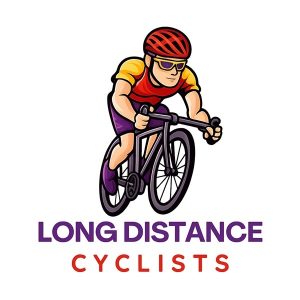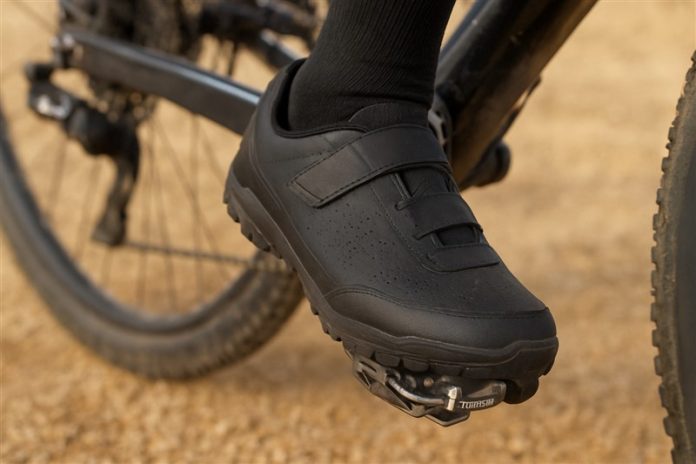Choosing the right pedals is one of the most important decisions a rider makes before taking on long-distance cycling or ultra-endurance events. While bicycles, saddles, and gearing often get the most attention, pedals directly affect your comfort, efficiency, and overall riding experience. The debate between clipless pedals and flat pedals has been ongoing for decades, with passionate advocates on both sides.
In this article, we’ll explore the pros and cons of each system, discuss which scenarios they work best in, and provide guidance on how to choose the right option for your next long ride, brevet, or ultra-endurance race.
What Are Clipless Pedals?
Despite the confusing name, clipless pedals actually involve clipping in. The term “clipless” originated in the 1980s when pedal systems evolved away from traditional toe-clips and straps. Clipless pedals use a cleat attached to your cycling shoes that locks into the pedal mechanism, creating a secure connection between foot and pedal.
Key Features of Clipless Pedals:
- Secure foot retention for efficient pedalling.
- Two-bolt (SPD) or three-bolt (Look, SPD-SL) systems.
- Variety of float options (degree of side-to-side movement to reduce knee strain).
- Designed for efficiency and power transfer.
What Are Flat Pedals?
Flat pedals, sometimes called platform pedals, are the traditional style found on most bikes. They provide a wide surface area where your shoes rest without any attachment mechanism. Riders can wear any footwear, from sneakers to hiking shoes, without special cleats.
Key Features of Flat Pedals:
- No special shoes required.
- Wide, grippy surface for stability.
- Instant foot release, ideal in technical or stop-start riding.
- Common in mountain biking and bikepacking.
Pedal Choice in Long-Distance Cycling
Unlike short road races, where maximum efficiency is the only goal, long-distance cycling prioritises comfort, injury prevention, and adaptability. Pedal choice can influence:
- Energy efficiency over 200–1,200 km+ rides.
- Knee and foot health.
- Comfort when walking or during resupply stops.
- Adaptability to varied terrain (tarmac, gravel, trails).
Advantages of Clipless Pedals for Long-Distance Cycling
1. Improved Pedalling Efficiency
With clipless pedals, your foot is locked in place, allowing you to push down and pull up during the pedal stroke. This creates a more efficient power transfer and reduces energy waste, which can be significant over hundreds of kilometres.
2. Consistent Foot Placement
Keeping your foot in the same optimal position reduces strain on your knees and hips. Over very long rides, even small misalignments on flat pedals can cause repetitive stress injuries.
3. Better Control on Technical Terrain
For riders tackling mixed surfaces or steep climbs, being clipped in provides more stability and control when pulling up on the pedals or manoeuvring the bike.
4. Reduced Foot Fatigue
Because your foot is supported by the shoe and pedal connection, hotspots and numbness can be reduced compared to flat pedals where your foot presses directly on the platform.
Disadvantages of Clipless Pedals
1. Walking Difficulties
Clipless shoes are less comfortable for walking, particularly in road-style systems with large three-bolt cleats. During long events with frequent resupply stops, this can be inconvenient.
2. Learning Curve
New riders often experience the “clipless fall” when forgetting to unclip at traffic lights or stops. This risk is amplified when fatigued during ultra-distance rides.
3. Foot Swelling Issues
On multi-day rides, feet can swell, making stiff cycling shoes uncomfortable. Flat pedals offer more flexibility in this regard.
4. Mechanical Problems
If your cleat bolts loosen or pedals jam, riding becomes difficult. Maintenance is key, especially in remote endurance races.
Advantages of Flat Pedals for Long-Distance Cycling
1. Shoe Versatility
Riders can wear any shoes, from hiking boots to trainers, which is valuable for tours involving off-bike exploration or unpredictable terrain.
2. Immediate Foot Release
There’s no need to twist your foot to unclip. This can be reassuring in emergencies, technical descents, or when fatigued.
3. Comfort with Foot Swelling
On multi-day rides, swelling feet can cause discomfort in cycling shoes. Flats allow looser footwear that can adjust more naturally.
4. Accessibility and Lower Cost
Flat pedals don’t require special shoes or cleats, making them budget-friendly and simple to maintain.
Disadvantages of Flat Pedals
1. Reduced Efficiency
Without being clipped in, you lose the ability to pull up on the pedal stroke, relying mostly on downward force. This may lead to greater fatigue over long distances.
2. Less Secure Foot Position
Feet can slip during wet conditions or on rough terrain. Repeated adjustments may lead to hotspots and inefficient pedalling.
3. Increased Risk of Knee Pain
Without consistent foot alignment, long-term repetitive pedalling can strain knees, hips, or ankles.
Clipless vs. Flat Pedals: Side-by-Side Comparison
| Feature | Clipless Pedals | Flat Pedals |
|---|---|---|
| Efficiency | High – full pedal stroke engagement | Moderate – mainly downward force only |
| Foot Position | Fixed and consistent | Variable, may slip or shift |
| Comfort (multi-day) | Can cause swelling issues, less walkable | Flexible shoe choice, more walking comfort |
| Control | Secure, good for climbing and rough terrain | Less secure in wet/rough conditions |
| Learning Curve | Steeper, requires practice | Very easy, intuitive |
| Cost | Higher (pedals + shoes + cleats) | Lower (basic pedals + regular shoes) |
| Best For | Endurance road, gravel, ultra racing | Bikepacking, touring, casual long rides |
Hybrid Approaches for Long-Distance Cycling
Many riders combine the best of both systems:
- SPD shoes with recessed cleats: Designed for walking and riding, common in gravel and touring setups.
- Dual-sided pedals: Clipless on one side, flat on the other, providing flexibility.
- Switching setups depending on the ride: Some riders choose clipless for road brevets and flats for bikepacking adventures.
Real-World Rider Experiences
- Audax Riders often favour SPD (two-bolt clipless) shoes because they strike a balance between efficiency and walkability during controls.
- Bikepackers tend to opt for flats when navigating unpredictable terrain and spending extended periods off the bike.
- Ultra-distance Racers typically prefer clipless for efficiency, but many switch to SPD sandals or recessed cleats for multi-day comfort.
Injury Prevention and Long-Term Health
One of the biggest considerations in long-distance cycling is avoiding overuse injuries. With clipless pedals, precise cleat alignment is essential to prevent knee pain. Flat pedals reduce this risk since foot position can vary, but the lack of consistency can create other issues. Riders should:
- Get a bike fit to optimise pedal and cleat setup.
- Use insoles to reduce foot numbness.
- Switch foot positions on flats to avoid hotspots.
Environmental and Terrain Factors
- Road Randonneuring (Paris-Brest-Paris, London-Edinburgh-London): Clipless SPD pedals are the most common choice.
- Mixed-Terrain Ultra Races (Atlas Mountain Race, Silk Road Mountain Race): SPD or flats are both common, depending on rider preference.
- Touring Across Countries: Flats often win due to shoe versatility and walking comfort.
Conclusion: Which Pedal System Is Right for You?
The decision between clipless and flat pedals in long distance cycling ultimately depends on your riding style, goals, and personal comfort.
- Choose Clipless Pedals if: You value efficiency, consistent foot placement, and maximum control during climbs and rough terrain.
- Choose Flat Pedals if: You prioritise comfort, flexibility, and the ability to walk easily during long tours or off-bike sections.
For many long-distance cyclists, the SPD system with recessed cleats offers the best balance, combining efficiency with walkability. However, both systems have their place, and the best choice is the one that allows you to ride further, longer, and more comfortably.















